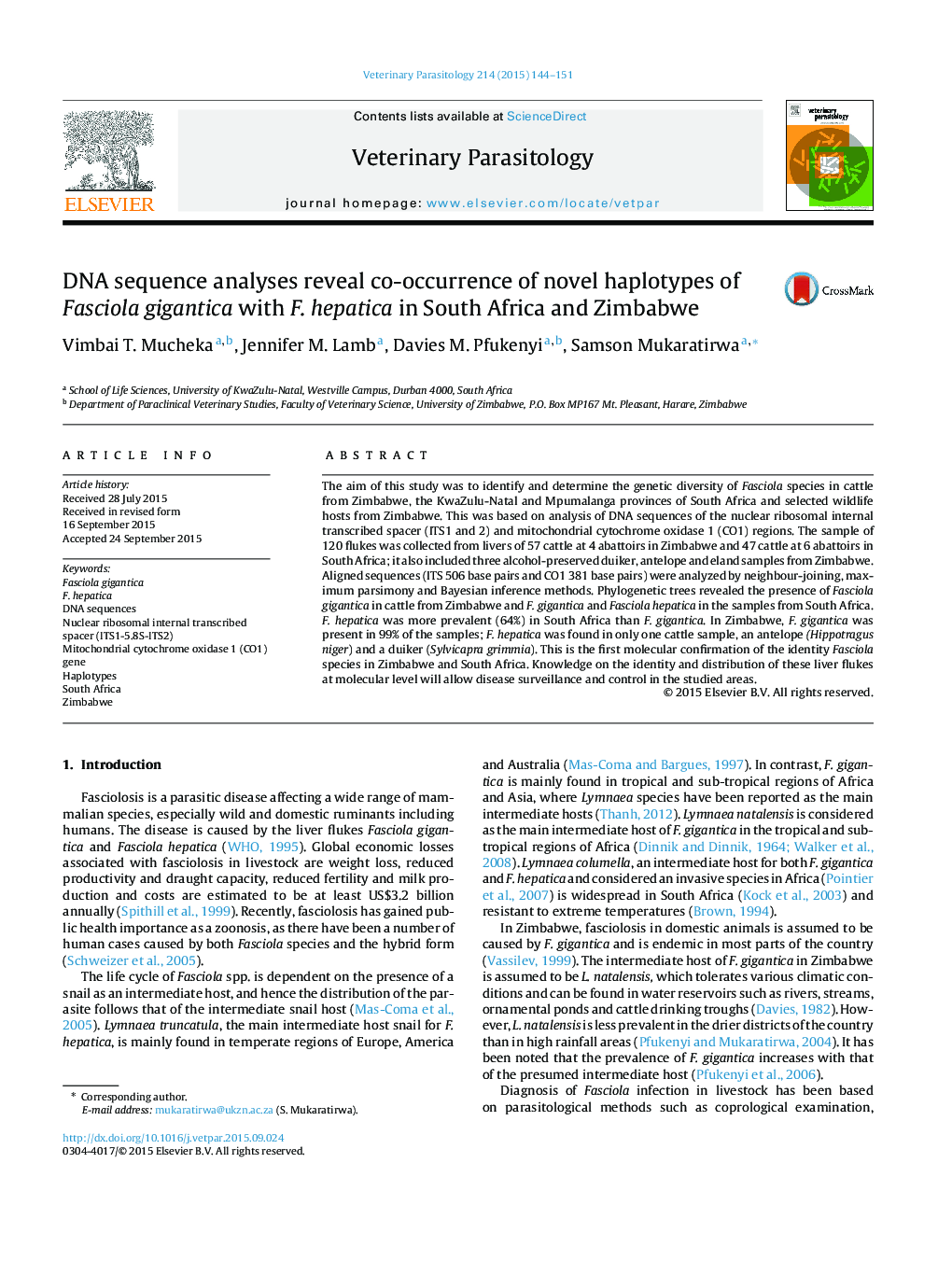| Article ID | Journal | Published Year | Pages | File Type |
|---|---|---|---|---|
| 5802257 | Veterinary Parasitology | 2015 | 8 Pages |
â¢We reveal the genetic diversity of Fasciola spp. in Zimbabwe and South Africa.â¢We base our analysis on DNA sequences of ITS1 and 2 and CO1 regions.â¢We reveal F. gigantica in Zimbabwe and F. gigantica and F. hepatica in South Africa.â¢Fasciola hepatica was more prevalent in South Africa than F. gigantica.â¢It is the first molecular confirmation of Fasciola spp. in Zimbabwe and South Africa.
The aim of this study was to identify and determine the genetic diversity of Fasciola species in cattle from Zimbabwe, the KwaZulu-Natal and Mpumalanga provinces of South Africa and selected wildlife hosts from Zimbabwe. This was based on analysis of DNA sequences of the nuclear ribosomal internal transcribed spacer (ITS1 and 2) and mitochondrial cytochrome oxidase 1 (CO1) regions. The sample of 120 flukes was collected from livers of 57 cattle at 4 abattoirs in Zimbabwe and 47 cattle at 6 abattoirs in South Africa; it also included three alcohol-preserved duiker, antelope and eland samples from Zimbabwe. Aligned sequences (ITS 506 base pairs and CO1 381 base pairs) were analyzed by neighbour-joining, maximum parsimony and Bayesian inference methods. Phylogenetic trees revealed the presence of Fasciola gigantica in cattle from Zimbabwe and F. gigantica and Fasciola hepatica in the samples from South Africa. F. hepatica was more prevalent (64%) in South Africa than F. gigantica. In Zimbabwe, F. gigantica was present in 99% of the samples; F. hepatica was found in only one cattle sample, an antelope (Hippotragus niger) and a duiker (Sylvicapra grimmia). This is the first molecular confirmation of the identity Fasciola species in Zimbabwe and South Africa. Knowledge on the identity and distribution of these liver flukes at molecular level will allow disease surveillance and control in the studied areas.
